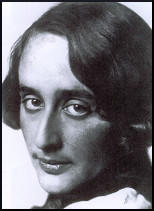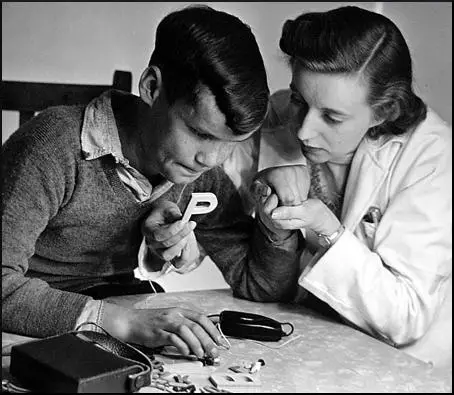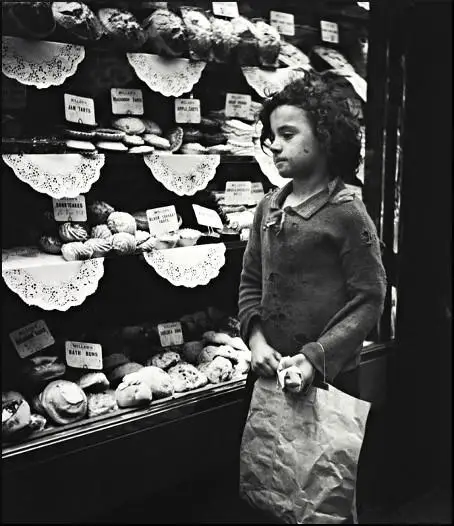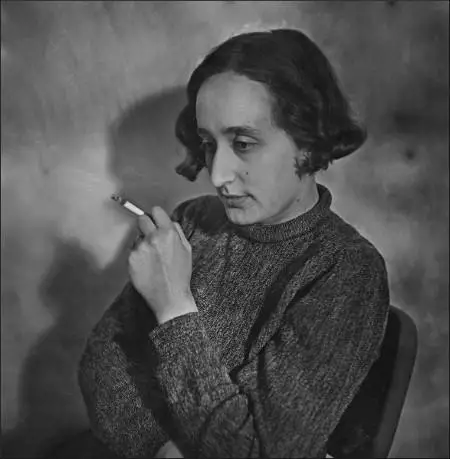Edith Tudor Hart

Edith Suschitzky ( Edith Tudor-Hart), the daughter of Wilhelm Suschitzky (1877–1934) and Adele Bauer (1878–1980), was born in Vienna on 28th August, 1908. Her father ran a left-wing bookshop in the city and was a campaigner for a variety of different progressive causes. This included advocating birth control and sex education. (1)
Edith trained as a Montessori kindergarten teacher and in 1925 travelled to England with the intention of finding work. Her biographer, Amanda Hopkinson, has pointed out that Edith "was remembered by those who knew her in her youth as immensely vivacious, amusing, curious, and gifted". (2)
In 1925 she returned to Austria and studied photography under Walter Peterhans at the Bauhaus in Dessau. She also carried out two undercover missions for the NKVD in 1929. (3) Edith began to take politically committed photographs: "Austria was still reeling from the effects of the loss not only of a war but of an empire. Suschitzky's series on street beggars, mostly the war wounded, Gypsies, and blind or deaf people, remains utterly harrowing: all are attempting to earn a living with an instrument or a few stray articles for sale; all are dressed in rags, some lacking even shoes or protection against the cold. Other images illustrate the lives of those without domestic water and power, without a bathroom or furniture. Whole families exist on bomb sites or rubbish tips. By contrast, there are heroic pictures of May day parades (shot from above) and demonstrations by the unemployed with the already sinister figures of the special police forces set against barbed-wire barricades in the background." (4)
Edith Tudor Hart in London
Edith Suschitzky also became involved in left-wing politics and after Adolf Hitler came to power she was arrested as a "communist sympathiser". (5) On her release she married Alex Tudor Hart at the British consulate and moved to England. Alex became a general practitioner (GP) in London and Edith established a photographic studio in Brixton. (6) In her photographs she documented a great many of her husband's patients and their children, living conditions, home and working lives.

Edith Tudor Hart continued to work for the NKVD. Her main contact was Litzi Friedmann who had also born in Vienna and had married an Englishman, Kim Philby. In January 1934 Arnold Deutsch, one of NKVD's agents, was sent to London. As a cover for his spying activities he did post-graduate work at London University. In May he made contact with Edith and Litzi. They discussed the recruitment of Soviet spies. Litzi suggested her husband. "According to her report on Philby's file, through her own contacts with the Austrian underground Tudor Hart ran a swift check and, when this proved positive, Deutsch immediately recommended... that he pre-empt the standard operating procedure by authorizing a preliminary personal sounding out of Philby." (7)
Recruits Kim Philby
Philby later recorded that in June 1934. "Lizzy came home one evening and told me that she had arranged for me to meet a 'man of decisive importance'. I questioned her about it but she would give me no details. The rendezvous took place in Regents Park. The man described himself as Otto. I discovered much later from a photograph in MI5 files that the name he went by was Arnold Deutsch. I think that he was of Czech origin; about 5ft 7in, stout, with blue eyes and light curly hair. Though a convinced Communist, he had a strong humanistic streak. He hated London, adored Paris, and spoke of it with deeply loving affection. He was a man of considerable cultural background." (8)
Deutsch asked Philby if he was willing to spy for the Soviet Union: "Otto spoke at great length, arguing that a person with my family background and possibilities could do far more for Communism than the run-of-the-mill Party member or sympathiser... I accepted. His first instructions were that both Lizzy and I should break off as quickly as possible all personal contact with our Communist friends." It is claimed by Christopher Andrew, the author of The Defence of the Realm: The Authorized History of MI5 (2009) that Philby became the first of "the ablest group of British agents ever recruited by a foreign intelligence service." (9)
Rhondda Valley
Alex Tudor Hart became a doctor in the Rhondda Valley in Wales. Edith Tudor Hart continued to take photographs of her husband's patients. Duncan Forbes has argued that she saw the camera as a political weapon. Her recurring themes were child welfare, unemployment and homelessness. “She liked the detail that came with a medium-format Rolleiflex camera. And seeing the world from waist height, which is where you hold those cameras, meant she was able to communicate better with her subjects. Her face wasn’t hidden. What intrigued me about her was what a good picture maker she was, bridging the divide between a documentary style and something more pictorial." Forbes adds that she took photographs “through windows to emphasise her voyeurism, and limit the sentimentality”. (10)

In 1935 Edith Tudor Hart contributed to the Artists' International Association (AIA) exhibition, Artists against Fascism and Against War. She also had some of her photographs published in Picture Post, Daily Chronicle and Lilliput Magazine. She wrote about the political implications of her photography: "In the hands of the person who uses it with feeling and imagination, the camera becomes very much more than the means of earning a living, it becomes a vital factor in recording and influencing the life of the people and in promoting human understanding." (11)
Recruits Anthony Blunt
Edith Tudor Hart continued to work with the NKVD. In a letter dated 8th October 1936 stated: "Through EDITH (Edith Tudor Hart) we obtained SOHNCHEN (Philby). In the attached report you will find details of a second SOHNCHEN who, in all probability, offers even greater possibilities than the first. EDITH is of the opinion that he is more promising than SOHNCHEN. From the report you will see that he has very definite possibilities. We must make haste with these people before they start being active in university life." (12) The potential recruit was Anthony Blunt. (13)

She became less active after the birth of her son, Thomas, in 1936, who suffered from autism. On the outbreak of the Spanish Civil War her husband Tudor Hart decided that he must contribute to the war against fascism. In December 1936 he joined the British Medical Aid Unit. When he arrived in Spain André Marty appointed him to the rank of major. According to her biographer, Amanda Hopkinson, by the "time he returned at its end Edith had to accept that their marriage was effectively over." (12)
In March 1938, a Leica camera originally purchased by Edith Tudor Hart was discovered in a police raid on the home of Percy Glading, who was subsequently convicted of organizing the Woolwich Arsenal spy-ring, but when questioned by Special Branch detectives she simply denied any involvement. As their was no other evidence against her she was released with charge. (13)
Breakdown & Poverty
Edith Tudor Hart found life difficult after the Second World War: "Tudor Hart had to provide not only for herself but also for a son who, it gradually emerged, suffered from autism. A dual dedication to Tommy, for whom she attempted every kind of restitution to health, from psychoanalysis to a residential home, and to her own uncompromising style of photography inevitably put her under severe strain. The outlets for her work, never large nor lucrative, were dwindling, particularly with the post-war demise of Lilliput, the News Chronicle, and especially Picture Post. Even the non-paying but morally supportive left-wing press took a while to recover its circulation - paradoxically afflicted by the combination of a Labour Party victory and higher standards of living." (14)
According to Nigel West, the author of The Crown Jewels: The British Secrets Exposed by the KGB Archives (1999), Edith Tudor Hart "suffered a breakdown; her son had already been taken into care". She later opened a small antiques shop in Brighton. (15)
Edith Tudor Hart died of stomach cancer at Coppercliff Hospice, Redhill Drive, Brighton, on 12 May 1973.
Primary Sources
(1) Nigel West, The Crown Jewels: The British Secrets Exposed by the KGB Archives (1999)
As with the Cambridge group, the penetration of Oxford by the Soviets began as a result of the initiative taken by Edith Tudor Hart, a key figure in Soviet espionage operations in Britain, although little has ever been written about her. Born in Vienna in 1908 to William Suschitzky, a radical socialist who advocated birth control and sex education and owned a bookshop in the working-class district of Petzvalgasse, Edith trained as a Montessori kindergarten teacher and in 1925 travelled to England to work as a teacher. Two years later she was back in Vienna, and studied photography under Walter Peterhans at the Bauhaus in Dessau. In 1933, at the height of the political repression, she married Dr Alex Tudor Hart, a left-wing medical practitioner, at the British consulate and they moved to Brixton in south London, then to the Rhondda Valley. As well as being an active member of the banned Austrian Communist Party, she was also a Soviet illegal who had completed two undercover missions, to Paris and London, in 1929.
Upon their return from South Wales, Alex Tudor Hart joined the Republican forces in Spain as a surgeon, while his wife opened a photographic studio in Acre Lane, Brixton, where, after the birth of her son in 1936, she began to specialize in child portraits. During this period, while active in the Workers Camera Club, contributing to Picture Post and organizing the Artists against Fascism and War exhibition, she maintained contact with her friend from Vienna, Litzi Friedman, who was by then separated from Kim Philby, and liaised closely with Bob Stuart, who was himself acting as a clandestine link between CPGB headquarters and the Soviet Embassy. She divorced Alex after his return from Spain....
After the war Edith worked as a commercial photographer and briefly for the Ministry of Education, but her mental condition deteriorated and she suffered a breakdown; her son had already been taken into care. She later opened a small antiques shop in Brighton, and died of liver cancer in 1973, her remarkable espionage role undiscovered.
(2) Ben Macintyre, A Spy Among Friends (2014)
Philby's introduction to Arnold Deutsch appears to have been arranged by Edith Tudor-Hart, an Austrian communist friend of Litzi's. Born Edith Suschitzky, the daughter of a wealthy Viennese publisher, Edith married an English doctor and fellow communist named Alexander Tudor-Hart, and moved to England in 1930, where she worked as a photographer and part-time talent-scout for the NKVD, under the remarkably unimaginative codename "Edith". She had been under MI5 surveillance since 1931 but not, fatefully, on the day she led Philby to meet Deutsch in Regent's Park.
Philby was just the sort of recruit Deutsch was looking for. He was ambitious, well connected and devoted to the cause, but unobtrusively: unlike others, Philby had never made his radical views obvious. He sought a career in diplomacy, journalism or the civil service, all excellent perches for a spy. Deutsch was also under the impression that St John Philby was an agent of British intelligence, with access to important secret material.
(2) Boris Volodarsky, History Today (1st August, 2010)
When Philby and Litzi came to London in May 1934, Philby decided to join the Communist Party and came into contact with one of its underground cells. He was promptly reported to Edith Suschitzki, by now Edith Tudor-Hart, a talent-spotter for the NKVD, the KGB's predecessor. She was Austrian and had met Philby and Litzi in Vienna after Philby travelled to Austria as a sympathiser of the Social Democrats who waged a civil war against the government of Engelbert Dollfuss. After vetting Philby for the NKVD, Edith introduced him to 'Otto', another Austrian NKVD agent whose covert mission in London was to recruit for Stalin's secret service.
